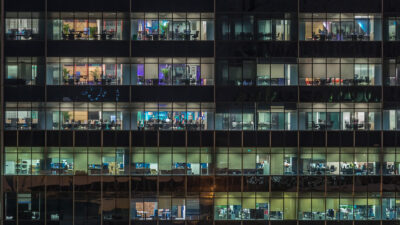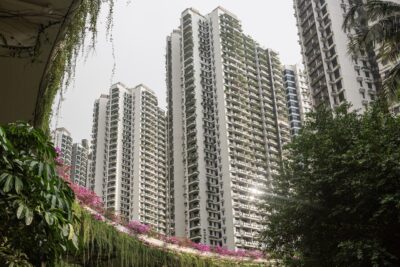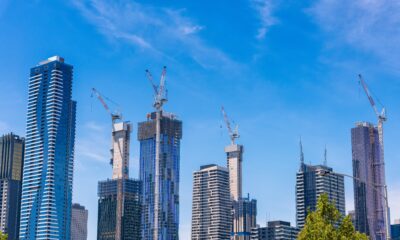50 dynamic years under Lee Kuan Yew: Singapore’s real estate history

The founder and architect of modern Singapore, Lee Kuan Yew, has died today aged 91.
Serving as prime minister for three decades (and later senior prime minister and ‘minister mentor’), Lee’s legacy includes transforming Singapore from a developing, third-world economy into a first-world country, where some of the most expensive real estate properties in the world are located.
Here, we take a look at some of the milestones in Singapore’s real estate industry in the last five decades of Lee’s lifetime as the Lion State’s leader.
1960 – The Housing & Development Board (HDB) is formed to oversee the development of public housing in Singapore.
1963 – After achieving self-governance in 1959, Singapore merges with Malaysia in a short-lived union, which ends two years later due to several violent protests.

Many Singaporeans live in HDB flats
1965 – Singapore finally becomes a sovereign state, known as the Republic of Singapore. Lee Kuan Yew is still prime minister, while the HDB chief is still Lim Kim Sam, who was appointed HDB head in 1960 and spearheaded the construction of many high-rise, public housing apartments through the succeeding years.
1974 – The Urban Redevelopment Authority (URA) is born. The URA’s main task is to develop programmes for strategic land use in the small city-state. It is also involved in the conservation of significant buildings, car park management, land sales and the overall urban design of the Lion State.
1980s – Knowledge-based industries, such as education, lifestyle, medical, information technology and software, get a major boost from Singapore’s Economic Development Board, which administers manpower training programmes. These pushed further Singapore’s reputation as a capital-intensive and high-tech nation, indirectly allowing the real estate industry to benefit from larger incomes.

The Ascott pioneered serviced apartments worldwide
1984 – A pioneer in the serviced residences industry, The Ascott Limited is established and today operates some 35,000 units, making it the largest international serviced apartment operator worldwide.
1990s – International property and hotel conglomerate City Developments Limited (CDL) builds Singapore’s first eco-mall, first eco-condominium and first carbon-neutral development.
1999 – The Building and Construction Authority (BCA) is formed under the Ministry of National Development to promote building quality excellence in the country.
2003 – The Building and Development Division of HDB becomes a separate entity under the name HBD Corporation Pte Ltd, which is later renamed Surbana Corporation Pte Ltd.
2004 – Lee Hsien Loong, son of Lee Kuan Yew, is sworn in as Prime Minister. Lee’s programmes through the years include speeding up of the completion of HDB flats for singles over 35 years, the curbing of property prices, and the expansion of the mass transit systems. Lee Kuan Yew becomes Minister Mentor.
2005 – Singapore and Malaysia settle a territorial dispute over land reclamation and sign ‘The Settlement Agreement’.
2005 – The Building and Construction Authority begins issuing the BCA Green Mark Certification for establishments that show environmental sustainability, innovative features, and efficient designs and construction methods.
2009 – The first rounds of property cooling measures are introduced by Singaporean authorities to moderate soaring real estate prices.
2009 – The country’s premier commercial district, Orchard Road, undergoes a SGD40 million (USD29 million) renovation and beautification plan.
2010 – Marina Bay Sands, located at Singapore’s iconic new downtown, opens. It comprises high-end residential, retail, commercial, leisure and hospitality components.

2010 – In recognition of the world’s most sustainable cities, the biennial Lee Kuan Yew World City Prize is established by the URA and the Centre for Liveable Cities.
2011 – The Singapore Real Estate Exchange (SRX) launches as part of the property sector’s efforts to share pricing information, improve liquidity and increase transparency in the market. Members include the biggest real estate firms and agencies in the country, such as Savills, RE/MAX, DTZ, Huttons, ERA Real Estate, ECG, and others.

2011 – Ensign Media, publisher of Asia’s industry-leading Property Report magazine, holds the first annual South East Asia Property Awards (SEAPA) in Singapore, which was held at the lavish Fort Canning Hotel. British billionaire and top real estate mogul Nick Candy is one of the judges.
2013 – Singapore overtakes Tokyo as the most expensive city in the world, per the Economist Intelligence Unit, which reported that many low-income Singaporeans are unable to buy their own homes due to rising income inequality in the city-state and the astronomical costs of real estate.
2013 – One of the most expensive residences in Singapore, located on 33 Nassim Road, lists on the market for SGD242 million (USD179 million).
2015 – Lee Kuan Yew dies of pneumonia at age 91, a few months before the celebration of Singapore’s 50th anniversary of independence.
Sources: Property Report magazine, Asia Property Awards, SRX, The Online Citizen, RememberSingapore.org, HDB, URA, BCA, EDB, EthicalPerformance.com, Forbes.com, EIU, International Business Times; Image: AFP
Recommended
Meet the vagabond architect behind India’s housing scene
Vinu Daniel is helping to shake up India’s home building setting
Where Asian real estate stands in a fragmented, warmer world
Asia’s real estate industry faces many and varied challenges as external factors continue to bite
6 sights to see in Singapore’s Marine Parade
Handily located Marine Parade has emerged as a vibrant investment choice in the Lion City
There’s a township dedicated to health and wellness in Malaysia
Property seekers have their health needs catered for at KL Wellness City








